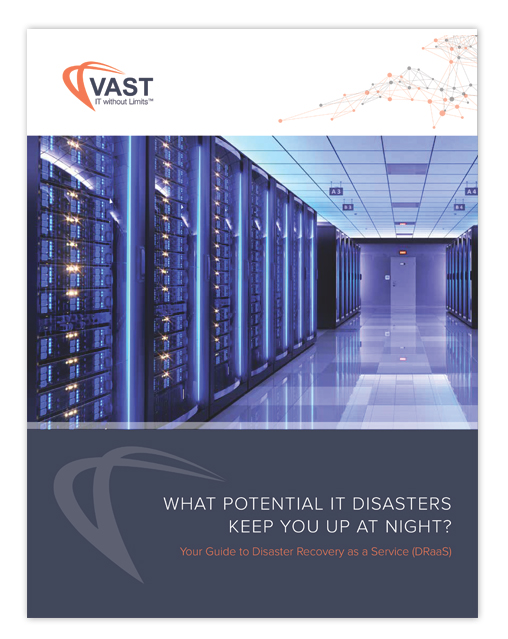Companies typically migrate to the cloud to address evolving business requirements that are difficult to meet with an on-premises IT environment. Organizations leverage the flexibility, scalability, and advanced technology from cloud service providers (CSPs) to streamline operations and implement new solutions. The migration can involve part or all of a company’s IT environment.
Migration is just the first step in a successful cloud journey. Once you’re in the cloud, adapting to your new environment is crucial. Businesses must optimize cloud performance post-migration to achieve the expected benefits of the transformation.
It can be challenging to maximize the benefits of cloud migration. Companies should consider the following best practices to achieve the best results from the move. You will see how vital it is to have comprehensive visibility into your cloud environment to optimize performance. VAST View provides the visibility into cloud resources your company needs to obtain the maximum value from its investment.
Best Practices for Optimizing Your Post-Migration Cloud Performance
Companies adopting the following best practices can optimize performance and justify migrating to the cloud.
Right-size cloud resources
CSPs offer flexibility and scalability, providing seemingly limitless resources to address a company’s fluctuating business objectives. The scalable nature of cloud environments is usually one of the driving factors behind a migration. Using the right-sized cloud resources to optimize performance and avoid unnecessary spending is critical.
Companies can take multiple steps to right-size their cloud resources.
- Select the right cloud instance types – Teams must determine the best cloud instances for their workloads. Some workloads may have additional CPU, memory, or storage requirements that are best addressed by specific cloud solutions. Companies should strategically use reserved instances for stable workloads and spot instances for ad-hoc, non-critical tasks.
- Audit usage patterns – Organizations should monitor and analyze usage patterns to verify efficient resource utilization. Teams can decommission or downsize underutilized instances to meet workload requirements more efficiently.
- Take advantage of auto-scaling – Implement auto-scaling policies to address changing business requirements automatically. Your CSP will automatically adjust resources like storage and CPU capacity to maintain operations while controlling cloud spending.
Select the appropriate storage and data transfer solutions
A CSP usually offers different storage and data transfer options to address varying data access and business requirements. Teams can dramatically improve performance by choosing the right solutions for their workloads.
- Tiered storage – Cloud providers allow customers to choose from tiered storage solutions to meet different data access criteria. Business-critical and frequently accessed data can be stored on devices that provide optimal performance. Less essential and archival data can be stored using long-term and less expensive solutions. Companies must ensure they are using the correct storage solutions for excellent performance.
- Maximize data transfer performance – Organizations can optimize data transfer performance by taking measures such as implementing a content delivery network (CDN) and utilizing caching to avoid redundant transmission. Caching can be particularly beneficial in supporting database activity.
Address network performance
Networks are a foundational characteristic of cloud services. Your environment and its performance can be significantly affected by network design and configuration. Organizations should consider the following measures to enhance network performance.
- Utilize regions strategically – Large CSPs support data centers and computing resources located in multiple geographic areas. Organizations can use multi-region deployments of compute and storage resources to maximize throughput and minimize latency.
- Enable data compression – Compression reduces the volume of data transferred for faster response.
- Use load balancers – Load balancers route traffic for optimal network performance and can be used with auto-scaling solutions to ensure consistently suitable bandwidth to support IT activities.
Implement automation
Organizations can optimize cloud performance using the CSP’s automation capabilities to streamline various tasks. The benefits of automation include increased response speed, enhanced consistency with reduced errors, and cost efficiency through activities like auto-scaling. In addition to scaling resources, teams can automate infrastructure provisioning, monitoring, and issue remediation.
Performance monitoring
Companies need to continuously monitor cloud performance to identify issues that may impact business operations. Decision-makers should define key performance indicators (KPIs) to track CPU usage, throughput rates, and data transmission latency. Tools can use these KPIs to trigger alerts when thresholds are exceeded or abnormal activity is detected.
Managed Services
Engaging a reliable managed service provider (MSP) is one of the most effective methods of optimizing cloud performance after migration. Partnering with an MSP lets your team concentrate on running and growing your business while the provider handles your cloud environment. The experience of an MSP’s technical team can be instrumental in identifying optimization opportunities that your staff may miss.
An MSP will assist in right-sizing the environment and can provide valuable expertise in selecting cloud network and storage solutions. Companies usually recoup the cost of hiring the MSP through the financial savings and operational efficiency they contribute to the cloud environment.
Visibility is Essential
Companies need visibility into their cloud environment before considering any performance optimization. Without comprehensive visibility, there is no way to identify which aspects of the environment may be degrading performance. Your team may spin their wheels investigating network issues when the issue is that you are using the wrong storage tiers for a specific workload or application.
VAST View is a software platform that offers the visibility necessary to optimize cloud performance. It provides companies with the information they need to manage public cloud or hybrid IT infrastructures efficiently and maximize performance. VAST View supports AWS, Microsoft Azure, and Google Cloud Platform environments.
How We Optimize Your Cloud Performance
VAST offers managed public cloud services designed to bring your business the power, flexibility, and scalability of the cloud. Our experienced and U.S.-based engineers work with you to optimize your public cloud environment. The following are some highlights of our managed services offering.
- Cloud infrastructure and security assessments ensure that your data is secure and your business obtains the performance it needs.
- Managed detection and response services protect your business from emerging threats and help identify anomalous and risky behavior.
- Cloud monitoring services ensure your environment operates efficiently and meets business requirements.
- We offer cloud backup-as-a-service (CBaaS) and disaster recovery-as-a-service solutions to protect your valuable data.
Contact us and let us help optimize your cloud performance so you can maximize the business benefits of a migration.



